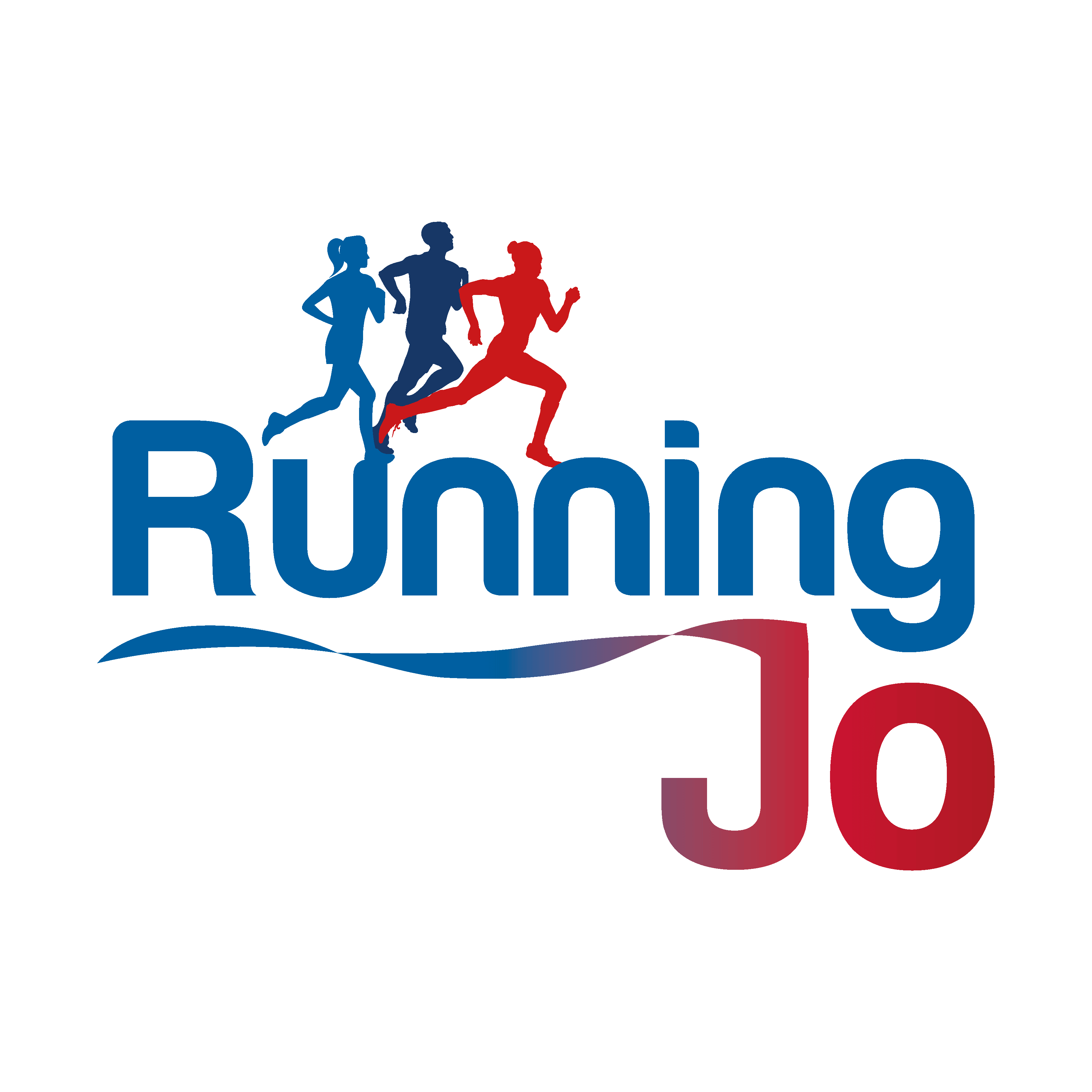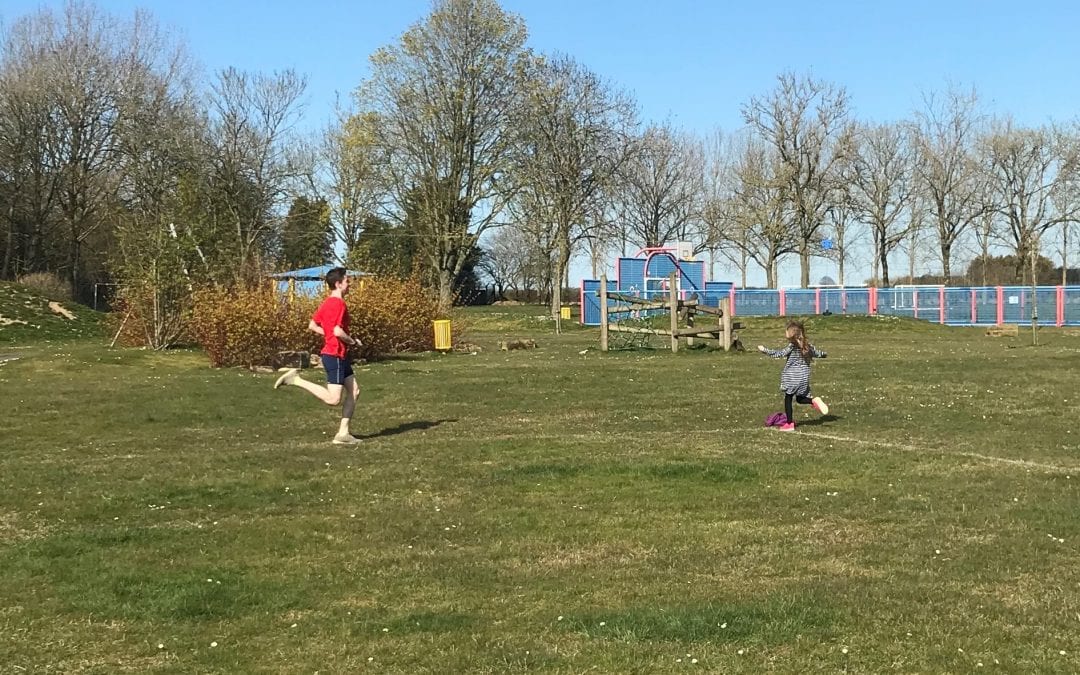The Paarlauf Race is the perfect session for families to run together. It allows you to balance some serious interval training with taking your kids out for fresh air and exercise during lockdown.
As a fully qualified British Athletics Coach I have lots of experience delivering mixed-ability group sessions. To help you during these challenging times I have adapted several of my favourite sessions to make them suitable for you and your family regardless of ability or age.
My very own Lego video demonstration makes it easy to understand how the Paarlauf Race works. What’s more if you, like us, need a competitive element to make it fun, then the paarlauf race gives you this too – whether you are the alien or the unicorn!
Warm Up
Every session must start with a warm up. This is a simple, short but effective warm up for all ages.
If you would like to add some additional volume to your running session then you can start by jogging some additional laps of the pitch but this is not appropriate for young children.
Jog for 30 seconds
10 x Single Arm circles – forwards and backwards each arm
10 x Double arm circles – forwards and backwards
Jog for 30 seconds
Leg swings x 10 forwards and backwards each leg
Leg swings x 10 across each leg
Jog for 30 seconds
10 x bounces (two-footed mini jumps on balls of your feet)
10 x hops each leg
Jog for 30 seconds
10 x star jumps
Jog for 30 seconds
10 seconds pitter patter steps on the spot (small jogging steps on the spot)
10 seconds fast feet (small steps on the spot as fast as you can)
Jog 30 seconds
2 x 10ms walking on your toes
2 x 10ms walking on your heels
2 x 10ms high knee raises
2 x 10ms back kicks
Paarlauf Race
Paarlauf means “pair running” and is a classic athletics session. This is a fun session in which everyone takes a turn to run as fast as they can while the other person jogs or walks back to the start for their recovery. You can compete as individuals against your partner or as teams against another team.
How does it work?
Pair up the slowest or youngest with the fastest or oldest. If you have an odd number in your family then pair up the fastest person with the two slowest.
The session works well for mixed abilities by making some simple adjustments.
• If your pairs are evenly matched then divide the pitch in half. Each person runs exactly half of the pitch for each lap.
• If one runner is older or faster than the other then divide the pitch into thirds. The older/faster runner runs two thirds. The other runner runs one third.
This means the older or faster runners will run further each turn. What’s more, they will also get less recovery as their partner runs less distance each time.
You can make the session competitive by trying to run as fast as you can to get to the finish before your partner has got back to the start. Alternatively you can make it a relay race where you compete as a team against the other pairs.
How much space do you need?
Ideally a football or cricket pitch or field. This session will also work using a smaller area or even your garden if that’s all you have available.
The session
1. Start on opposite sides of the pitch.
The runners start opposite each other across the pitch. They choose one runner to go first.
2. The first runner runs as fast as they can around the pitch
The second runner waits on the other side of the pitch while the first runner runs around the pitch as fast as they can until they meet their partner on the other side.
(Note take care not to run into each other and cause injury from the collision).
3. The second runner takes their turn to run as fast as they can.
As soon as the first runner reaches them the second runners sets off to run as fast as they can around the pitch.
4. Jog/walk recovery
While each runner is running fast around the pitch the other runner jogs or walks across the pitch back to the start. They must be back at the start before the other runner reaches them.
5. Repeat.
The runners take turns until they have completed the agreed number of laps. Rest for two minutes then repeat again.
6. Watch the video
Watch the video for a practical demonstration of how the Paarlauf Race works in practice.
Suitable numbers of laps.
The appropriate number of laps depend on the age of your children, their developmental stage, their fitness and the size of the pitch or field.
The guidelines are a rough guide. You should adjust the number of laps up or down depending on how much of the pitch each child runs for each lap.
Remember the Golden Rules below. Do not make your children do more than they want to do.
These recommendations are based on a standard football pitch (approx. 400ms)
Age 8 – 11 years
3 sets of 3 laps with 2 minutes recovery between each set
Age 12 – 14 years
3 sets of 3 – 5 laps with 2 minutes recovery between each set
Age 15 – 17 years
3 sets of 4 – 6 laps with 2 minutes recovery between each set
The Golden Rules
As a fully qualified, licensed and insured British Athletics Coach there are some golden rules to follow to ensure the running sessions are appropriate for young athletes.
1. The sessions are suitable for all ages from 8 years upwards.
These sessions are specifically designed for children aged 8 and upwards. If you may choose to some adaptations for younger children you must ensure you follow the golden rules below even more closely.
2. Running should be fun.
Running with children should be fun. Some of the sessions have a competitive element but the overriding principle is enjoyment. Show your children that competition can be fun – even if you don’t win.
3. Don’t make your children do more than they want to do.
If your children want to stop, let them stop. If you think they are unlikely to finish the whole session, then plan ahead. Take a ball, some books, drawing or even an electronic device to keep them entertained when they’ve had enough of running. Then you can carry on.
4. Make sure you always warm up.
Warming up is essential before any strenuous exercise to minimise injury for both children and adults. Everyone who does the session must do the warm up.
5. No more than one or two running sessions each week for children.
Children should engage in a variety of running, jumping, throwing and multi-sport activities rather than specialise in any one sport or discipline until they have reached puberty. Even if you think they are destined to become Olympic Champions!
6. Children are not just mini-adults.
Children have different physiology to adults. What is suitable for adults is not always suitable for children. For example, children are less able to utilise their lactate energy system so may need more recovery than adults. Children should not run as far or as often as adults. The growth plates in their bones are susceptible to damage from too much impact from running which may have long lasting effects on their growth and development.
7. If something hurts then STOP.
You can minimise injury by warming up effectively and not running when you are tired, unwell or already injured. If something starts to hurt during the running session then stop immediately. Follow the principles of rest, ice, compression and elevation (RICE) and seek medical advice if appropriate.
8. Seek medical advice first.
If you or any members of your family have any underlying health condition then seek medical advice before engaging in strenuous activity.

